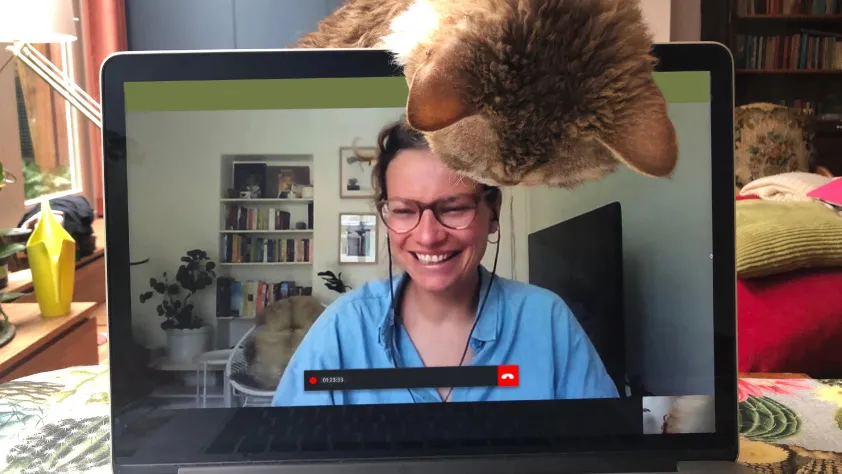
Customers
Top 5 Marketing Challenges of 2023 (and How to Solve Them)
December 8, 2022
If there’s a quality most marketers have had to embody since the pandemic, it’s agility.
In 2020, marketers had to shift their marketing tactics and content plans at the drop of a hat to align with remote work, supply chain issues, and service delays.
Two years later, marketers still need their flexibility. A looming recession means many teams must make the most of tight budgets and reduced staff. And with cookies being phased out1 marketers will require new data-sourcing tactics.
Now's the time to be proactive. As you look toward the new year and what it will bring, we’ve outlined the top five marketing challenges businesses will need to overcome in 2023. Read on to learn how to turn those pain points into growth opportunities for your business.

1. Cutting through the noise to reach your audience
The pandemic forced many marketing teams to develop creative new strategies to connect with their target audiences remotely. The CMO Survey’s 2022 Report, Marketing in a Post-COVID Era2, found that 65.1% of respondents said they increased the number of channels they used during the pandemic.
But after two years spent online, many consumers are sick of the constant digital bombardment. They’re frustrated with being blocked by ads before they can watch a video, read an article, or stream their favorite show. Buyers have been increasingly inundated with advertising, and traditional marketing and advertising are predicted to make a comeback in 2023, too – further aggravating the ad fatigue.
A challenge for marketers in the new year will be figuring out how to cut through all the noise customers are experiencing daily in order to make a genuine, lasting connection with target audiences. The secret to being memorable? Personalize your consumer experience as much as possible.
How to make your voice heard:
- Connect with customers on their preferred channels: Use customer behavioral data to determine the channels your buyers want to connect on, and where you should invest budget and resources.
For example, Podium’s 2022 Local Business Messaging Trends3 report found that every age group surveyed (even those over 60) listed texting as their preferred channel to connect to businesses. The report also found that over 40% of customers would switch to a different business or service provider if it offered messaging communication. The data suggests that if you aren’t currently investing in messaging, doing so will likely have a positive effect on lead generation and conversion rates.
- Use customer segmentation to create targeted experiences: A full digital evolution may take time for some organizations, but you can leverage your current channels to create a personalized customer experience right away. Segment your customers into like groupings (by age, region, or communication preference, for example), and create a unique marketing strategy to resonate with each group.
For example, say you’re trying to build a deeper millennial customer base, and your research shows these customers greatly prefer texting with businesses over receiving phone calls. You can segment all your millennial customers into a group, and mark their communication preference as “text only.” Then, if a millennial fills out an interest form on your site, the salesperson who follows up on the lead will know to reach out via text first. These small details make your customers feel valued, comfortable, and–most importantly–valued by your brand, ultimately building trust.
- Invest in team training: If you’re going to use a new channel in 2023, empower your in-house team with proper training to enable them. Offer core certifications and company-sponsored continuing education courses to get them up to speed and feeling confident with these new channels as you integrate them into your marketing campaigns. The investment will prove worthwhile when your business begins scaling growth.
Change – even positive change – always causes a bit of anxiety in leaders and team members. So as you begin reintroducing pre-pandemic strategies, add in just one or two new channels at a time to give everyone time to catch their breath.

2. Tighter marketing and advertising budgets
The combined effect of inflation and the upcoming recession will cause many companies to reduce their budgets in 2023. 42.3% of the CMO survey4 respondents said they’re decreasing spending due to inflation. The study also found that 64.9% of companies surveyed have already increased prices to cope with inflation.
Marketers are in a tough spot. They have to prove the value of new and existing marketing channels, as well as their strategic value to business leadership in order to secure departmental funding. At the same time, they must find ways to reaffirm their brand’s value to customers who are facing new price hikes and supply chain shortage frustrations.
The digital channels many marketers are investing in are also expensive. Survey respondents report that 57.9% of their marketing budgets went toward digital modes like SEO, influencer marketing, and content marketing in 2022. And these channels often don’t come with instant KPIs you can take to leadership to justify increased spend. Take SEO content campaigns. While it’s a powerful tool, it often takes months–if not longer–to see tangible results.
How to work with a shrinking budget:
- Make the most of your budget by integrating messaging into existing channels: A recession means tighter budgets–and marketing teams are no exception. But you can maximize on a small budget when you combine social and digital channels with messaging. Direct conversations with customers are a great way to answer questions and nurture prospects to sale, while building better relationships in the process.
Take Instagram or Facebook business pages, for example. It costs you no additional spend to be available to customers via DM (except for paying your staff monitoring the inbox, of course). But for customers, having a 1:1 personalized interaction with a member of your team in a low-pressure, convenient, and asynchronous way could mean the difference between earning a customer for life and losing one to a competitor.
- Track conversion ROI with UTM codes: To track conversions in digital marketing, use your campaigns to send consumers to site pages using a UTM code. This code is added to the end of your URL address, allowing you to track which users visited the page straight from your content, which can help determine your conversion rate. Use UTMs in any digital marketing media that has a call to action on another page—like email newsletters, pay-per-click (PPC) advertisements, videos, webinars, and blogs.
Unfortunately, so much of today’s marketing approaches are long games without immediate results. But that doesn’t mean you can’t keep track of your successful campaigns to prove your department’s value.

3. Cookieless data sourcing causing marketing challenges
Google’s plan to phase out cookies will make obtaining customer data harder in the coming years.
This shift is due primarily to consumer privacy demands. Today’s customers want greater transparency and control over how companies use their data, and the world is responding. Regulations like the EU’s GDPR and California’s Consumer Privacy Act are cracking down on the ethical use and storage of customer data. Web browsers Safari and Firefox already block cookies by default. And Google’s announcement to no longer support cookies in the coming years will make collecting third-party data even more difficult.
The decline of cookies will cause challenges for the 83% of marketers5 who rely heavily on them to inform their product-focused strategies. While Google announced it will push back the cookie depreciation until 2024, the time to find new ways of collecting customer data sets is now.
First-party customer data–info a company gathers directly from its own customers–is the obvious replacement. This data is information required for customers to buy a product or service, like email address, location, and phone number. Marketers can also include optional questions in checkout forms to gather data, like what brought a customer to the site, what services they’re interested in, or how many purchases they’ve made. This additional information, called zero-party data, isn’t required for customers to make a purchase, meaning they must agree to opt-in in order to participate.
Unlike third-party data, these collection techniques are more personalized and transparent, since they’re collected directly from your own customers. And since they require an opt-in (either implicitly by providing contact information to purchase a product, or explicitly by making market research questions optional), they put marketers in a better position for compliance.
But adoption of this new data hasn’t been seamless for many marketers. A 2021 study by Google and BCG found that only 1-2%6 of companies collecting first-party data are using it to develop a single cross-channel customer experience.
How to get the most out of first-party data:
- Utilize customer data to drive automation: First-party data is unique in that it gives you insights, not on your target customer groups or people like your customers, but on your actual buyers. Use this data to create a personalized, automated messaging experience for these customers.
For example, say you run an online clothing boutique. Your first-party data reveals a customer segment of cost-conscious Gen Z female buyers. You decide to create an automated marketing campaign through a service like WhatsApp Business API. Buyers who opt-in to your text messages get exclusive discount codes, and will also be alerted each time your boutique has a sale. These messages can be scheduled in advance, freeing up your time while creating a personalized experience for this customer segment based on their identified interests. In essence, you’re building trust and rapport without having to constantly monitor an inbox.
- Develop clear opt-in for customers: First-party data requires customer consent to collect. Be clear and concise when requesting customer opt-in, and share how you’ll use this data to improve your products and your customers’ shopping experience. By law, you must also provide a simple opt-out method for customers who no longer wish to receive marketing messages or offers from your business. If you’re having doubts about your opt-in or opt-out process, it’s best to seek legal advice.
- Create multiple opportunities for data collection: Give yourself as many chances to collect first-party data as possible by offering customers loyalty programs, email newsletter subscriptions, and surveys. Leverage your customer feedback to find trends in buying history and preferences, and consider site analytics to measure customer behaviors, too.
First-party data not only improves your ability to personalize for your customers. According to BCG research7, using first-party data for data-driven marketing can save costs by 1.6x, and double your revenue.

4. Connecting with young, budget-conscious shoppers
Millennials used to be the largest generation, but Gen Z has recently overtaken them. In 2022, Gen Z accounts for 27%8 of the U.S. population.
According to Bloomberg9, Gen Z represents $360 billion in disposable income. But the trick is getting them to spend it, because they’re also much thriftier than previous generations. Thirty-two percent10 of Gen Zers think a high-paying job is a sign of success, (10% higher than any other generation), and 38% would rather rent clothes or shop at second-hand stores.
How to resonate with a Gen Z audience:
- Engage them where they are: A survey by Mitto11 found that 2/3 of Gen Z consumers prefer text messaging to emails while interacting with ecommerce brands. The study also found that 90% of respondents think it’s important their brands interact on Gen Z’s preferred channels – texting, social media, and other chat apps.
To resonate with this group, creating an engaging, personalized, and responsive messaging experience is key. Many business messaging solutions allow you to automate frequently asked questions, order updates and tracking, and even reminders for outstanding tasks so Gen Z consumers are never waiting for a response or update.
- Seamless omnichannel experiences: Marketers must be willing to invest in cutting-edge technology to provide the speedy, efficient experience Gen Z expects. But they must also acknowledge this generation’s preference for in-person shopping experiences – and the high expectations they have for those interactions.
Say a local boutique was holding a sale, and promoted it via geolocation on Instagram. A Gen Z buyer clicked the ad for more information, which sent them to a messaging app used by the business. The buyer texted the number to ask a store associate about a few pieces. The associate held the pieces behind the counter, so when the customer stopped by a few hours later, the pieces were waiting for her and the store associates were expecting her. This experience, though started online, was personalized from beginning to end, and ended in an in-person sale.

5. Talent shortage of experienced digital marketers
ManPower group12 found that talent shortages are at a 16-year high, with 75% of employers surveyed reporting struggles finding qualified talent. And they report that sales and marketing roles are the second-most in-demand after IT & data.
Interestingly, it’s not just that skilled digital marketers are hard to come by; it’s also that current marketers are getting worse at digital skills. Target Internet’s Digital Marketing Skills Benchmark 202213 found that many marketing skills stagnated or decreased between 2020 and 2021 (social media -2%, content marketing -4%, analytics and data -6%) – even while those areas grew in use.
This decline could be because the employees using these skills aren’t experienced in them, but must make do because of the staffing shortage. And this approach leads to quantity over quality, while giving employees little time to deepen their skill sets.
Many marketers will find that the talent shortage is a double-edged sword in 2023. On one hand, hiring is time-consuming and expensive. With a recession on the horizon, adding to the workforce isn’t a top priority for many organizations. On the other hand, trying to create a personalized digital experience without the manpower numbers to support it can be a challenge without the right technologies in place.
How to use automation to do more with fewer staff:
If your hiring budget is low, invest in automation solutions to free up your current employees. Automation can offer an excellent return on investment, with less of the added costs of hiring and training.
Many apps and platforms automate customer analytics, social media management, customer service chatbots, and email campaigns. While these automations can’t replace experienced digital marketers, they do free your current staff up to focus on marketing tasks that machines can’t complete.
- Increased efficiency/asynchronous communication: Asynchronous communication is a convenient and pressure-free way for customers to connect with businesses in the same format they use to text their friends. It also greatly increases your team’s efficiency, and allows you to connect to your buyers with less effort.
Use messaging automations to offer customers an instant response whenever they reach out–regardless of what time it is in your office. Many FAQs can be automated too, so customers may be able to solve their own issue without ever having to connect to a live member of your team. This automation greatly reduces your team’s workload, without causing customer frustration as they wait for you to be back online.
- Better lead generation and nurture: Automated messaging allows you to create personalized drip campaigns based on customer segment. When a new prospect opts-in to your messages, you can set the campaign to automatically reach out to them on a chosen schedule. This keeps your brand top of mind while delivering relevant, personalized information to your customers, without needing an additional staff member to manage the interactions.
- Scalability: Automation also leads itself seamlessly to scaling as your customer base grows. If your messaging campaigns are managed by a staff member, eventually that person will reach capacity and you’ll need to hire additional team members to keep up with demand. But when these interactions are automated, your business can grow as quickly as possible, without lack of staff slowing you down–or creating a slower customer experience. As your customer base grows, the AI simply sends more messages to more people, while your team stays freed up for human-specific tasks and projects.
These tips will help your company weather the talent shortage in the short-term. But keep in mind, your brand can also prepare for the long-term by supporting the next generation of marketers. Connecting with local colleges and universities and offering a digital marketing internship are two key ways to educate and equip the marketers of tomorrow.
Turn tomorrow’s marketing challenges into opportunities
While marketers will undeniably continue to face challenges in 2023, they’re also on the verge of great opportunities to reach audiences in new and exciting ways. Prepare your marketing strategy and your team for these five challenges, so you’re ready for the year ahead.